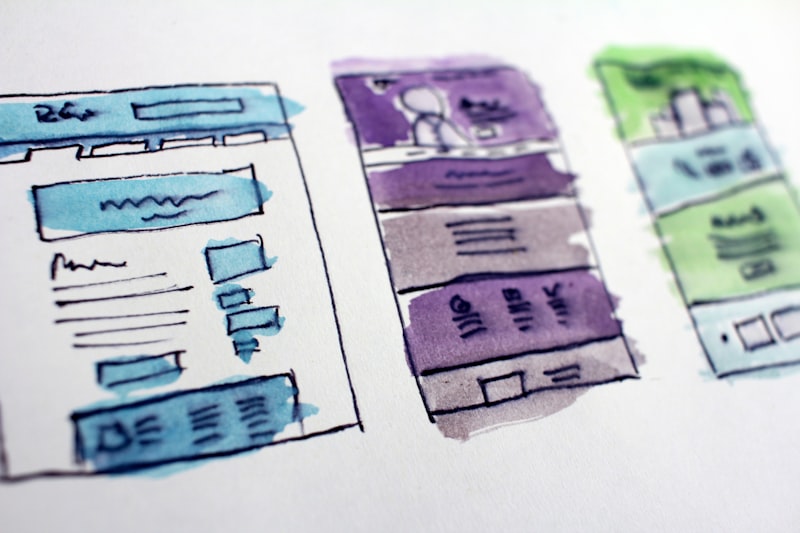Content marketing is a commitment to providing valuable information to your target audience, and building a relationship of trust and authority with them over time.
Let’s talk about our own buying behavior first. Had you started straight out with a price comparison of two or more possible choices?
It’s safe to say that a lot of buyers (you and I included) began the cycle long before we get to the final step — we ‘re always looking, talking to friends and colleagues, reading feedback, and one or two blog posts (or five or 10).
Leads and traffic don’t just come to our content to purchase something — they come to understand, to inform themselves, to educate themselves. For this purpose having a good marketing funnel is essential for your company.
A good marketing funnel is the shortest route to the best RoI for your content. And what marketer doesn’t want a great bang for their marketing bucks!
Before we dig deep into the topic, let’s first understand the basics. Shall we?
What is a B2B marketing funnel?
A marketing funnel is a framework that brings new leads through various types of relevant and targeted content. Such leads are then transformed into potential customers by “funneling” them gradually through even more content forms.
So in its essence, a B2B marketing funnel is a consumer experience model divided into segments from awareness to the final purchase. The funnel segments and their specifics(which we will study in this post) can vary depending on what you sell and who your target market is.
A B2B marketing funnel is fundamentally different from B2C funnels. B2C marketing in most of the cases is brand driven that is aimed at a large target audience. The purchase is emotionally driven, unlike the B2B marketing which relies on careful rational decisions made by the business leaders. And they have to, we are talking about hundreds and thousands of $$ at stake here. Not just that, one misstep could be disastrous for the company.
What is a customer journey map? Is it different from a marketing funnel?
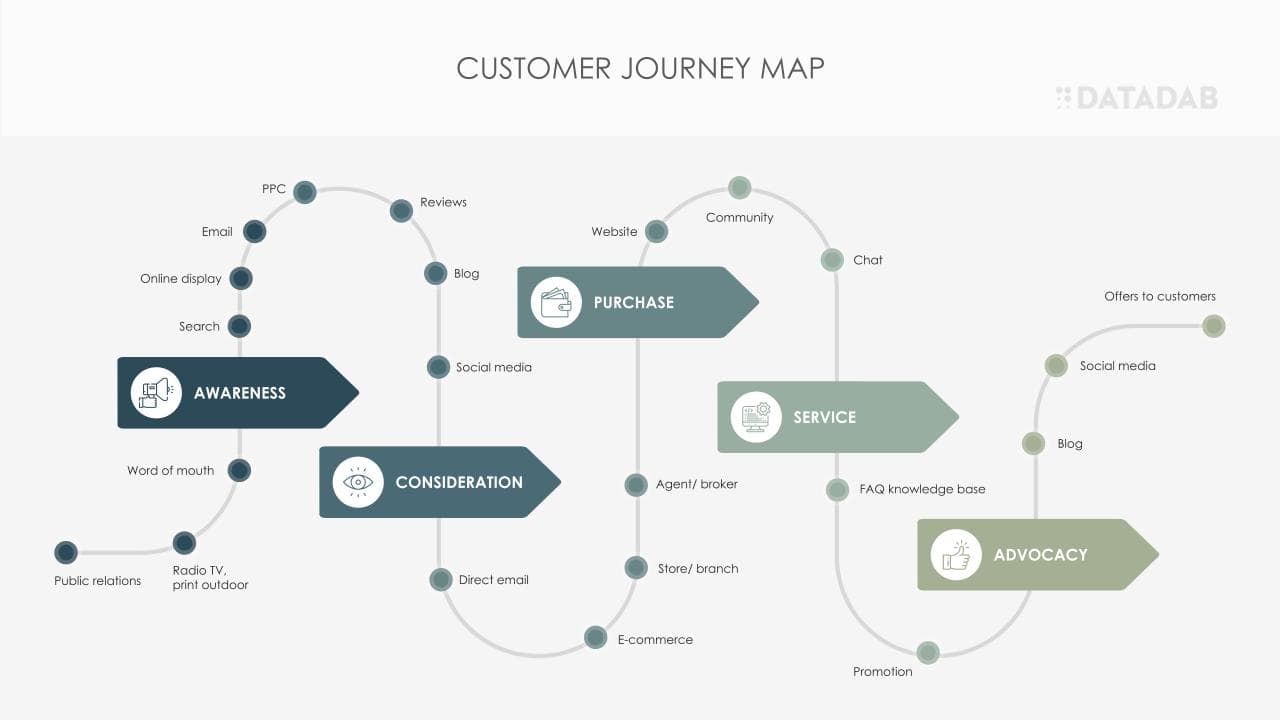
A customer journey map and a marketing funnel are 2 sides of the same coin. There are so many digital touchpoints available nowadays and your customers and prospects will be quite possibly getting exposed by all of those touchpoints.
Let’s consider this scenario: a reader comes across an interesting thought-provoking guest post by one of your business leaders on a leading news publication. The next month he passes by your company’s booth in a trade show. It strikes him that he read that content piece by this company. He then looks it up on Google and then lands on the company’s Linkedin page and further decides to follow the page. In the coming weeks, looking at an interesting post by the company in his Linkedin feed makes him click on it and he finally decides to subscribe to the company newsletter. Over time, he gets impressed by the quality of research and content the company creates. This person would eventually consider the company for a substantial project.
Instead of displaying a straight path to purchase, we see how a buyer’s actual decision-making process could look. It twists and turns, branching off into new directions as various elements are introduced to the buyer during the consideration phase.
The customer journey is basically a map of the route that a customer takes from the first time they come across your brand to the time they make a purchase. Unlike the more static, linear marketing funnel, the consumer path can be meandering and maze like (and typically is). The longer the selling period, the more likely it would be to move the average customer.
Customer journey maps and the marketing funnel are related tools of the same framework and can be used in complementary ways.

Why do you build a marketing funnel?
Content marketing produces 3x more leads per dollar spent when compared to paid search. The best type of SEO you can do is content marketing (especially creating blog content for your website).
Content marketing leads to more indexed websites, more backlinks and more opportunities for spreading the word about your brand. It is like leaving hundreds of little breadcrumbs throughout the internet to direct you to potential customers.
A marketing funnel as we saw earlier is a mechanism of offering the right answers at every stage of the consumer journey. It is designed on purpose to suit the overall business model. The more it keeps track of consumer data and the more structured it is, the more it will be effective in driving outcomes.
It keeps track of outcomes, automates the process and lowers the amount of time you have to spend in the process yourself. A marketing funnel helps you know exactly where every single person in your database is at every point in time of the customer’s journey. All you need to do now is tailor your marketing messages accordingly, craft convincing copying and you’ll get the results you ‘re getting.
What are the stages of a marketing funnel?
Let’s dive right into all the stages that a marketing funnel comprises of.
We believe a modern effective B2B marketing funnel doesn’t actually look like a funnel anymore. It’s starting to look more like the image below. Meaning, a prospect can move either way across this funnel 2.0 and not necessarily from top to bottom.
Awareness
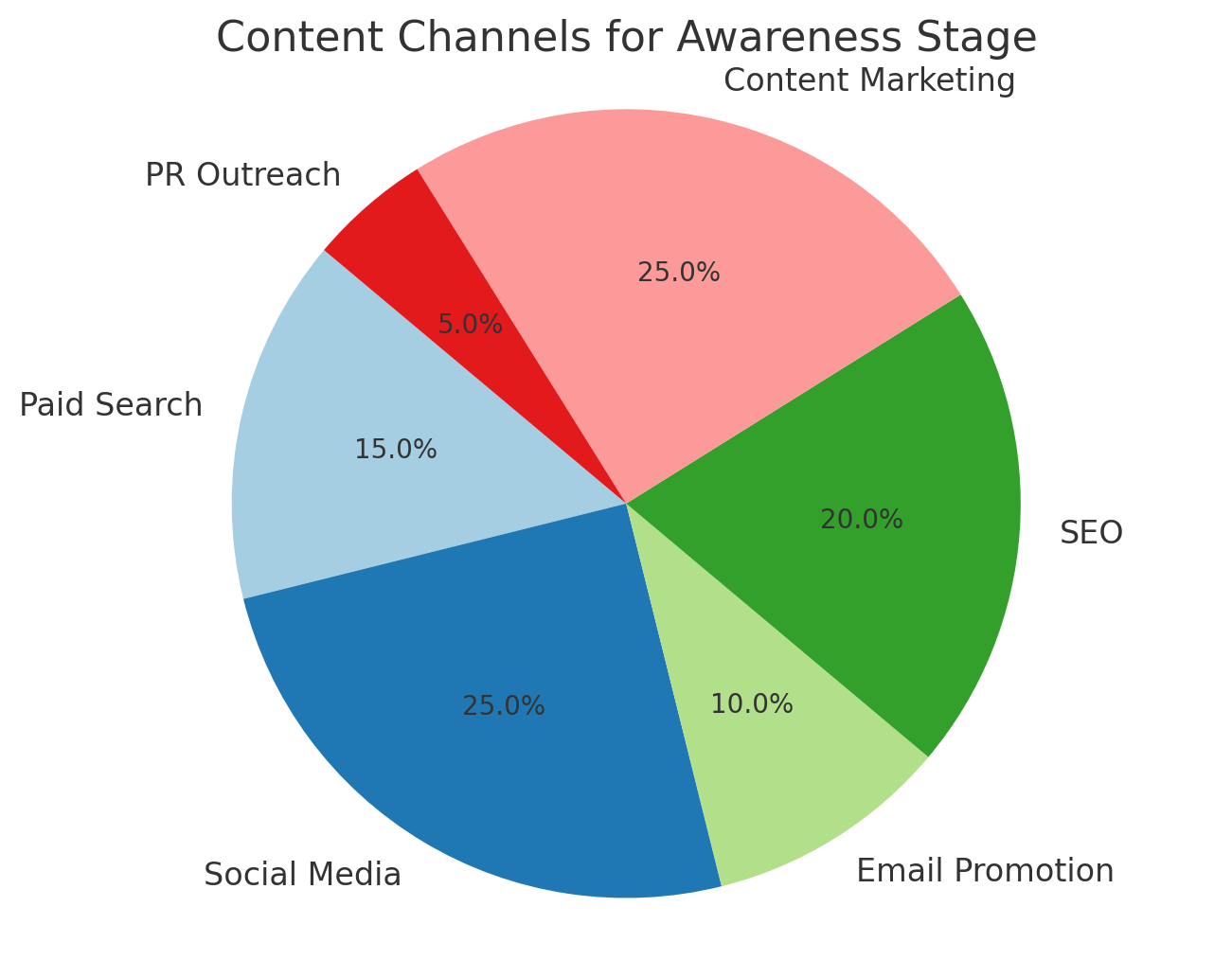
This stage is all about building brand awareness and site traffic. Sometimes also referred to as the top of the funnel(ToFU).
At this point, your prospects are still in their research’s initial discovery process. They’ve just started seeking information but might not be aware of your particular company or product.
Forrester’s research found that for every single piece of marketing you post, B2B buyers review 3 pieces of content about a vendor. Buyers find this knowledge primarily from advertising, social media, search engines and email sent by their colleagues. Which is why placement of your message at any possible touchpoint is essential.
Consideration

Consideration phase also referred to as Middle of the funnel or MoFU is about converting site visitors into leads for sales. When you’ve been introduced to people and earned some degree of value, it’s time to turn them into genuine leads.
The sales department plays a major part in sending customers down the pipeline until they reach this stage. Inbound marketing strategies attracting customers to your website, great content and social media are all very effective during this phase.
Close/Conversion
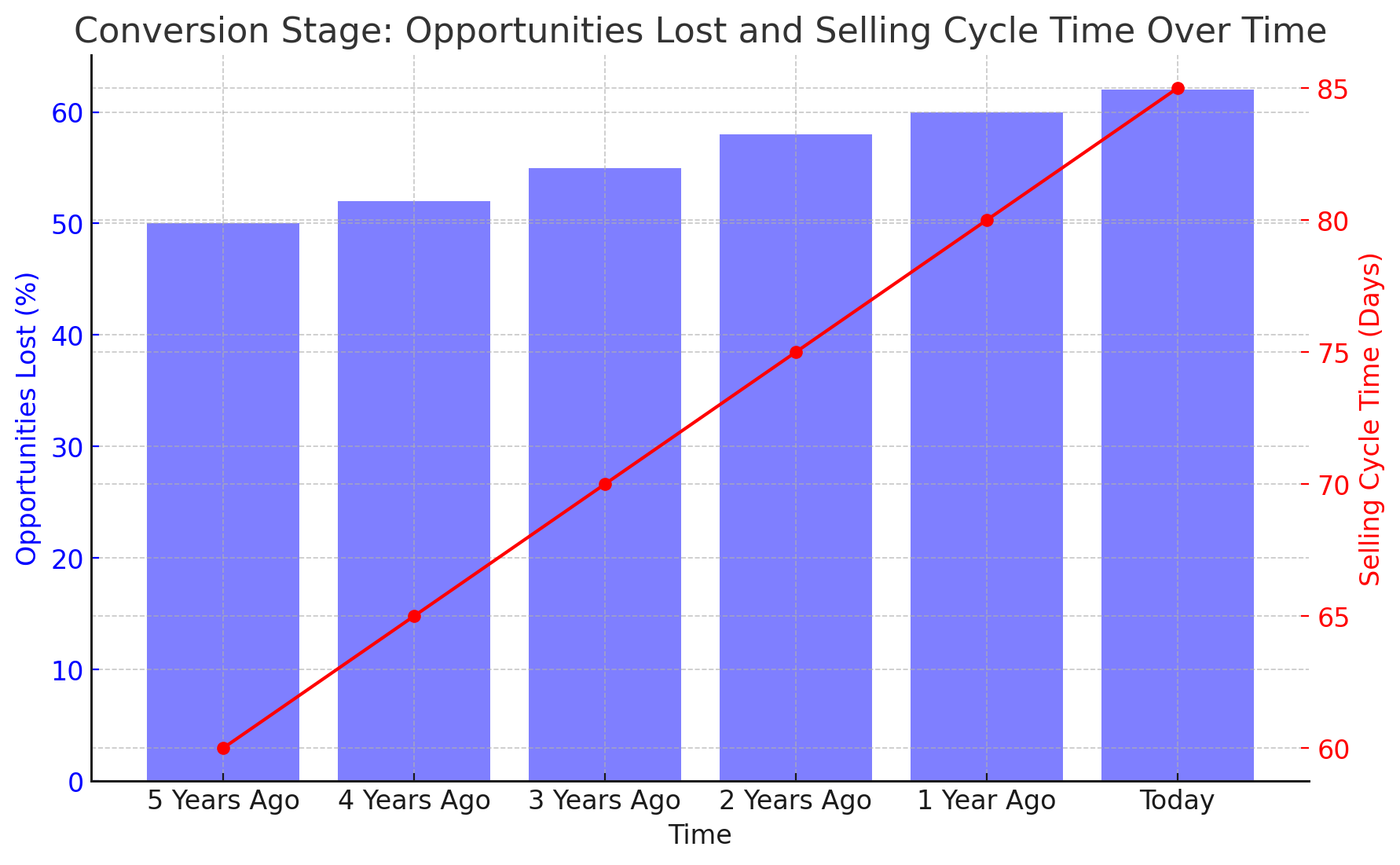
After you’ve nurtured your leads, it’s time to turn them into real customers which is what you do in this Bottom of the funnel or conversion phase.
During this closing phase, many of the strategies utilized during the awareness and consideration phases of the buying cycle come together. Yet there are certain challenges that you will need to address first. These include a poorly designed site, slow response time to requests for prospects and insufficient information available for a prospect to make an intelligent choice.
Retain/Loyalty

Typically this stage is not something that gets featured in a B2B marketing funnel. But this is a critical one. Retaining a customer is as important as acquiring one, if not more. It’s far easier to upsell or cross-sell an existing customer than starting from scratch and putting in all your efforts, resources and money.
Delight/Advocacy
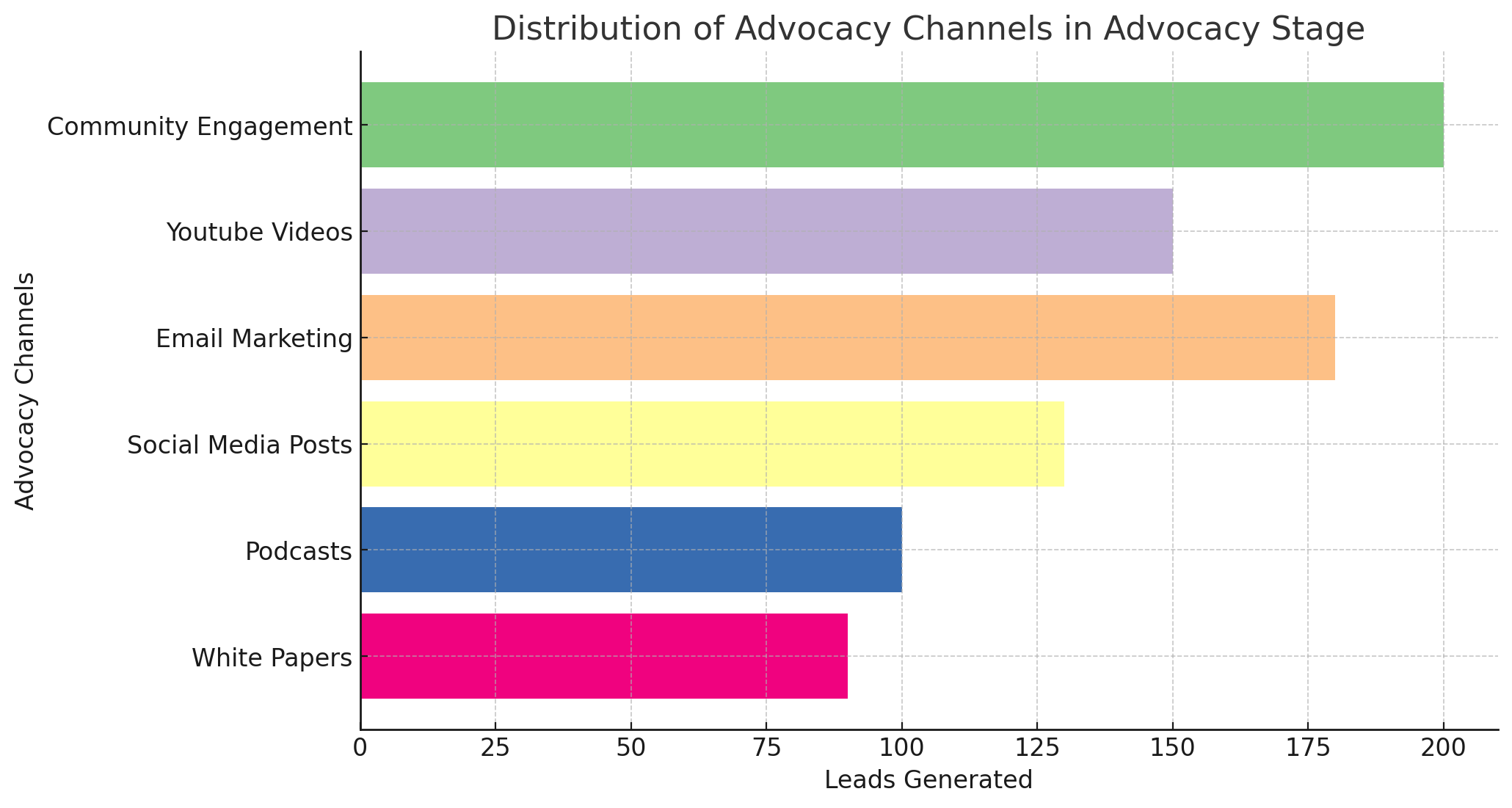
Advocacy happens when customers become more than customers: they become fans. Not only did they buy from you before, they probably bought again or continue to pay for your services. They love you now. They tell their mates about you and compliment you on social media.
Bringing subscribers to this marketing funnel level is highly important.
Why?
Because referral marketing is the best marketing. If your buddy tells you about an amazing product, you ‘re much more likely to buy the product because you trust your buddy.
What kind of content to create for each of those stages?
The most important section of the post.
Awareness Stage Content
Paid search, programmatic display ads, social, email promotion and video advertisement are some examples of paid strategies that help to raise visibility and bring people through the funnel and to your website where you can turn them into leads.
SEO, content marketing, social engagement on sites such as LinkedIn and Facebook, PR outreach combined with user-generated content are some organic ways that help drive awareness.
Let’s assume our hypothetical B2B company has launched a new Sales CRM tool for a specific industry. Let’s get down to it.
Stakeholders or searchers at this stage we’d like to target:
CEOs, CXOs, Sales leaders, VPs and Directors of Sales
Top Influences:
Peers & colleagues, service providers, vendors, industry analysts, industry events, business media etc
Top Questions At This Stage:
What are the best CRM software in the market?
What are the best CRM for our industry?
Content That Can Answer The Questions
Top CRM Software
Best CRM Software CRM for [industry]
Popular CRM for [industry] Why do you need a CRM?
What is a CRM, how is it useful?
Content Formats:
Research, Blog posts, Landing pages, Videos, Podcasts
Consideration Stage Content
Besides the help from your sales team, you can use many different strategies to facilitate the consideration stage. Many of them overlap with awareness strategies, so they will work together to generate leads and motivate people to become paying customers.
Email — Just about all of the B2B customers exchange information by email, so make sure you have a process in place to create an email list and strong content strategy so that you can send them relevant information.
When a prospect turns into a lead, it’s the job of the sales team to move them down the funnel to make them a customer. The chances of closing a sales-nurtured lead are approximately 50 percent higher than non-nurtured leads, showing that a good sales department will greatly affect the outcome.
Events like tradeshows, conferences etc have long been a tradition for B2B marketing. Events have now taken the internet route giving way to live streaming, webinars and online demonstrations. Google regularly employs this technique by uploading live stream from conferences that users can pre-register or view after the event on YouTube. Online events may be repurposed and marketed using email, social media, and google.
Continuing the same hypothetical B2B company we created earlier, let's build our user personas and decide on the content types:
Stakeholders or searchers:
Sales leaders, Sales Managers
Top Influences:
Service providers, Peers & colleagues, Vendors, Review sites
Top Questions At This Stage:
What results can we get from Product X?
How will product X help me?
What results can we get from Product X?
How does Product X compare to the rest of the competitors?
Content That Can Answer The Questions
Reviews of Product X
Alternatives to Product Y
Product X clients?
How to [outcome] using Product X?
Content Formats: Industry reports, blog posts, influencer posts, research, industry review sites, landing pages
Conversion Stage Content
Sales — The sales department plays a critical role in transforming opportunities into customers. They must be proactive and organized. In B2B sales, over 60% of opportunities are lost due to perceived indifference. Additionally, today ‘s selling cycle takes 22% longer than five years ago.
Official site — Think of the website as your sales force extension. Your site should be meaningful to your target customer. If you have numerous product offerings and customer types, you can create content that appeals to all. More than 70% of B2B users are disappointed when website content doesn’t suit their interests. For instance, they click on an ad they’re interested in and content doesn’t fit, it will definitely lead to a lost customer.
Stakeholders or searchers
Sales leaders, sales managers
Top Influences:
Vendor’s clients, vendor’s sales team, Peers & colleagues
Top Questions At This Stage:
Where can you buy Product X?
How does Product X work?
How much does it cost for Product X?
How do you setup Product X?
Content That Can Answer The Questions
Case studies for Product X
Pricing for Product X
Demo for Product X
How to order Product X
Where to buy Product X
Content Formats:
Sales product pages, Case studies, YouTube videos, landing pages
Loyalty Stage Content
In the loyalty stage, consumers establish a brand identity and start engaging with it. This is where engagement is critical. Through community interaction and outreach, B2B marketers can cultivate this personal connection to a brand. When a consumer is committed to a company, business references are more likely to be given.
The key to success in this stage is to ensure that your customers take full advantage of their new purchase.
Stakeholders or searchers:
Sales team
Top Influences:
Vendor sales team, vendor’s customer success team, peers and colleagues, business media, social media
Top Questions At This Stage:
What’s the best way to use Product X?
How do you use product X?
How to [outcome] using Product X?
Content That Can Answer The Questions
How [Brand ABC] achieved xxx using Product X?
5 underutilized features in Product X?
How to get started with Product X?
Content Formats:
Email marketing, white papers, blog posts, social media posts, videos, podcasts
Advocacy Stage Content
Making your customers advocates of your brand is the perfect progression of the customer journey. Evangelism by writing product reviews, sharing on social media will help generate more new leads. A non-branded external recommendation strongly influences prospects. Marketers should work to build their audiences to better help advocates, invite them to participate in case studies, or engage them around user-generated social media content.
Stakeholders or searchers: Sales team
Top Influences:
Email marketing, vendor sales team, vendor’s customer success team, business media, social media
Top Questions At This Stage:
How do we increase sales?
How can we win more deals?
How can I be a better salesperson?
Should we keep using Product X?
How can I reach my quota fast?
Content That Can Answer The Questions
How the best sales team always wins?
Common mistakes your sales team might be committing
10 awesome podcasts for sales teams
Find the subject lines that help you close deals
How to improve your reply rates?
Content Formats:
Community engagement, Youtube videos, email marketing, social media posts, podcasts, white papers
Conclusion
Ultimately it all boils down to identifying the audiences and their pain points in each stage of the funnel they are in. And how do you achieve that? By talking to them, by getting to know them really well. Ask them questions. Conduct interviews, surveys. Do whatever it takes to fill in the details of your target customers.
Ask these fundamental questions and genuinely take efforts to get the answers:
What issues they say they are facing that your business can address?
What inquiries do they have that your business can answer?
How can you make their lives simpler every day?
FAQ
What is a marketing funnel, and why is it important?
A marketing funnel provides a framework for moving potential customers through the journey from initial awareness of your product or service to becoming paying customers. It consists of sequential stages that gradually lead prospects closer to a purchase decision. The goal of the funnel is to generate more qualified leads and convert those leads into customers in the most efficient way possible. For B2B companies especially, having a well-planned funnel with tailored content mapped to each stage is crucial for business growth and return on investment. The marketing funnel acts as a guide for crafting content that answers prospects' questions and nudges them to the next level.
What are the main stages of a B2B marketing funnel?
The main stages of a typical B2B marketing funnel are awareness, consideration, decision, loyalty, and advocacy.
The awareness stage involves attracting potential customers and building brand recognition. Content like beginner's guides, industry research reports, educational blog posts, and podcasts work well here.
At the consideration stage, prospects are evaluating their options more seriously. Content that addresses pain points and demonstrates your value proposition, such as product demo videos, customer testimonials, and case studies, is most effective.
Once leads are ready to purchase, the decision stage requires content that provides that extra nudge, like pricing pages, implementation guides, and promotional offers.
After customers have purchased, the loyalty stage revolves around retaining them through content that enhances onboarding and ongoing product usage, for example, new feature announcements and troubleshooting guides.
Finally, the advocacy stage focuses on turning happy customers into brand advocates through content like reviews, referral programs, and co-created assets.
What type of content works best at the awareness stage?
The awareness stage is all about attracting potential customers and establishing your company as a thought leader. Useful content includes beginner's guides that educate readers on your industry, comprehensive industry research reports, product comparison articles that position your offering, educational blog posts and videos, guest articles published on industry websites, and podcasts. The focus should be on top-of-funnel content that raises brand awareness and drives initial website traffic.
What type of content is effective during the consideration stage?
During the consideration stage, prospects are evaluating their options more seriously and need content that convinces them of your value proposition. Product demo videos are useful for highlighting key features and differentiators. Customer testimonials and case studies provide crucial social proof. Enabling free trials of your product gives prospects hands-on experience. ROI calculators and assessments help quantify your impact. Webinars are an engaging format to answer prospects' questions live. Overall, the content for this stage should aim to address common pain points and demonstrate how you can solve them.
What content helps convert leads into customers?
At the decision stage, prospects are ready to make a purchase but need that extra reassurance before committing. Product pricing and payment pages enable frictionless transactions. Implementation guides and customer support articles build confidence in your post-purchase experience. Promotional discounts and incentives help prompt prospects to act. Proposals, quotes, and consultations make the ROI concrete. The content for this stage serves to provide prospects everything they need to make a confident purchasing choice.
How do you create content for customer loyalty and retention?
When customers have made a purchase, the focus shifts to retention and loyalty. This revolves around content that enhances onboarding and ongoing product usage. Examples include new feature announcements to highlight expanded capabilities, product update emails that keep customers informed, troubleshooting guides to facilitate self-service support, monitored customer forums to foster peer discussion, loyalty programs that reward engagement, refresher webinars to reinforce training, and advanced feature tutorials to spur adoption. The key is providing content that adds value throughout the customer lifecycle.
What type of content encourages customer advocacy?
Earning referrals and cultivating brand advocacy requires content that incentivizes and simplifies promoting your brand. This includes reviewing and testimonials content to collect positive feedback, structured referral programs that reward sharing, embedded social sharing options, co-branded content like case studies, newsletter sponsorships, and rewards for generating referrals. The goal is to gain customers' organic and enthusiastic advocacy through content that speaks to their experience.
How often should you publish new content?
For most B2B companies, maintaining a consistent content publishing cadence is ideal, such as publishing 1-2 new blog posts per week. This establishes expectations with your audience and ensures a steady stream of new content. High-performing content can also be repurposed into other formats like videos, podcasts, and infographics. The key is sustaining relevance and consistently adding value for your audience, rather than arbitrarily generating more content. Focus on quality over quantity.
How do you promote content at each funnel stage?
The optimal promotion channels tend to differ by the funnel stage:
Awareness stage: SEO, organic and paid social media, pay-per-click ads, retargeting display ads
Consideration stage: Email, social media, landing pages
Decision stage: Email, sales team follow-ups
Loyalty stage: Email, in-product messaging, social media
Advocacy stage: Email, referral programs, co-marketing
You need to leverage the channels where each stage's audience is most active and receptive.
How do you track and optimize your marketing funnel?
Analytics tools are vital for monitoring funnel performance. Key metrics to track include website traffic, lead generation, conversions, customer retention, and customer referrals. You can then identify high performing vs. low performing content. A/B testing different content formats and promotion approaches allows ongoing optimization. Measure funnels individually for each product/service line you offer. Frequently review the analytics to gain data-driven insights that inform how to improve your funnel strategy over time. Continual optimization is crucial for maximizing results.


